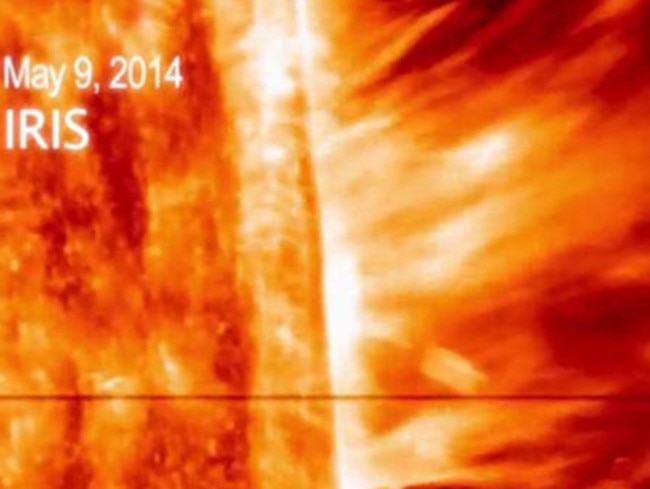NASA’s IRIS captures eruption of solar flares (CME) off sun’s corona
FOOTAGE of a gigantic eruption of solar flares surging off the sun has been captured for the first time by NASA.
FOOTAGE of a gigantic eruption of solar flares surging off the sun has been captured for the first time by NASA.
The coronal mass ejections (CMEs) produce huge clouds of superheated particles from the sun’s corona — the outermost and hottest layer — and can reach speeds exceeding 2.4 million kilometres per hour.
The CME, captured on May 9, was the first seen by Nasa’s Interface Region Imaging Spectrograph, or IRIS, NASA said.
SPECTACULAR IMAGES: NASA’s best from 2013
LIGHTS ON MARS: NASA’s Rover’s mysterious image

To capture the phenomenon, the IRIS must be pointed at the sun a day ahead of time and involves a degree of luck, NASA stated.
The field of view seen in the footage is about five Earth’s wide and about seven and a half Earth’s tall.
IRIS was launched last winter and it is managed by the Lockheed Martin Solar and Astrophysics Laboratory in Palo Alto, California.



